Title: A Giant Planet Candidate Transiting a White Dwarf
Authors: Andrew Vanderburg, Saul A. Rappaport, Siyi Xu, et al.
First Author’s Institution: University of Wisconsin-Madison, Madison, WI; The University of Texas at Austin, Austin, TX
Status: Published in Nature, open access on the arXiv
One field of astronomy that has exploded in the past ~30 years is the study of exoplanets, or planets outside of our solar system. Studying planets around other stars will not only help scientists answer the question of whether or not our little blue marble is unique in the universe, but it can also help astronomers figure out how solar systems are formed and how planets themselves are created. Since the first discovery of an exoplanet around a pulsar in 1992, astronomers have been on the hunt for new worlds, and have found thousands. Characteristics of the exoplanets that have been discovered thus far span the imagination: from the diamond planet orbiting pulsar J1719-1438 to the planet that experiences a triple sunset every day, exoplanets have been found to come in all shapes and sizes. Most of these planets have been found orbiting stars like our Sun, but the authors of today’s paper have discovered the first exoplanet in orbit around a white dwarf (WD).
A TESS-t of the Instrument
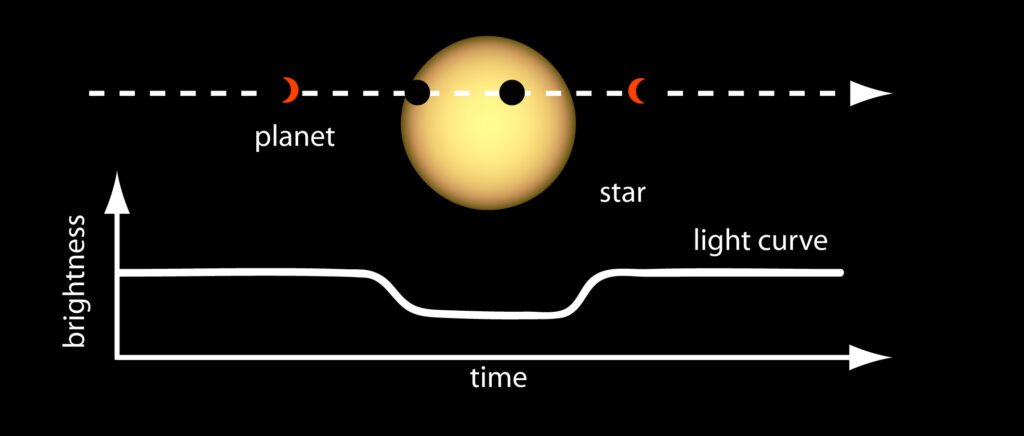
NASA’s Transiting Exoplanet Survey Satellite (TESS) has been on the hunt for exoplanets since 2018, and has found over 2,100 candidates. TESS uses the transit method for detecting planets, which measures the dimming of a star due to an orbiting body moving in front of it (see Figure 1). The instrument has an automated classification system that is designed to identify planets around main sequence stars. When TESS first observed a transit event around WD 1856+534 (see Figure 2), it rejected the signal because the star was not one of TESS’s usual targets (a main sequence star). This planet was not actually discovered until scientists did a visual inspection of all transit-like events detected around white dwarfs. The angular resolution of TESS is fairly course, so the team used two larger telescopes, the Telescopio Carlos Sánchez and Gran Telescopio Canarias, to reobserve the WD 1856+534 and were able to confirm that what they were looking at was indeed a Jupiter-sized object orbiting it.
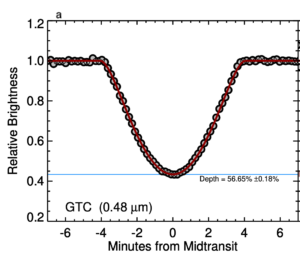
Characterizing the Planet
After its initial discovery, the authors knew the rough size of the object (called WD 1856 b) because of how much light it blocked out, but did not know its mass. Jupiter-sized objects can be anything from a giant planet (which has a mass of 1/10th of Jupiter’s mass) to a low-mass star (which can weigh as much as 10 Jupiters). Astronomers usually determine the mass of an orbiting object by looking at the spectrum of the host star and using Doppler monitoring (which relies on the fact that an orbiting body will Doppler shift the light from its host star as the object moves toward and away from us). Because this WD’s spectrum does not have any strong emission or absorption lines, they had to use other techniques, namely thermal monitoring. The team observed the object in the infrared using NASA’s Spitzer Space Telescope. They measured the amount of thermal emission (heat) from the object compared to that of the WD and found that the transiting body emitted no more than 6.1% of the flux (energy) of the star, confirming that it was either a planet or a very low-mass brown dwarf. The motion of the star indicated that it is part of the thin disk of the galaxy, meaning it is less than 10 million years old. Using this along with the mass (~14 Jupiter masses), they were able to confirm (using information from mass models) that it is a planetary body and not a brown dwarf.
How Did Such a System Form?
Most short-period WD binaries (which consist of either a WD-WD or a WD-brown dwarf) are formed through common envelope evolution. In this scenario, Star A and Star B orbit each other in a binary. Star A then becomes a red giant star and engulfs Star B in its gaseous envelope (which contains Star A’s core at the center). If there is enough gravitational potential energy, the envelope can be shed and the system becomes a binary with a period of hours to days; if not, Star B continues to orbit Star A’s core, spiraling inward until they merge (see Figure 3).

Compared to other WD binaries, this planet has a low mass (~14 Jupiter masses) and relatively long period (~34 hours). By looking at these two properties, the team inferred the energy of the system, and found that the numbers do not quite add up for the common envelope scenario to be plausible (it would only work if the common envelope phase began after much of the envelope had already been lost, which seems unlikely). Therefore, it is more likely that the system formed in a more exotic way. The authors suggest that this planet was around the progenitor of the WD (a main sequence star) when it underwent violent dynamical instabilities during stellar evolution. Simulations confirm that objects like this planet in multi-planet systems can be thrown very close to the star, and the orbital energy would have rapidly dissipated due to the tides raised on the planet by the WD, moving it inward. This likely happened with this star, and because it is so old (one of the oldest objects observed by TESS), the planet would have time evolve to the current state.
There is much more we can learn from this planet. If the mass is low enough for it to cool sufficiently, telescopes could probe for species like methane and ammonia; if it has a higher mass and retained some of its heat, the low luminosity of the WD will allow the James Webb Space Telescope to probe the emission spectrum of the planet. This system shows that low-mass objects can migrate to close orbits around WDs and avoid total tidal disruption. The formation mechanisms suggested by this planet could also produce planets that are a similar size to Earth, paving the way for discoveries of exoplanets similar to our little blue marble in diverse environments.
Edited by: Lukas Zalesky
Featured image credit: NASA’s Goddard Space Flight Center

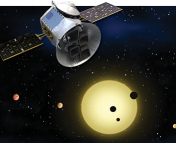
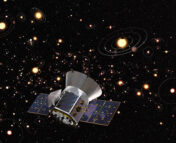
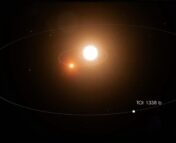

Coarse?